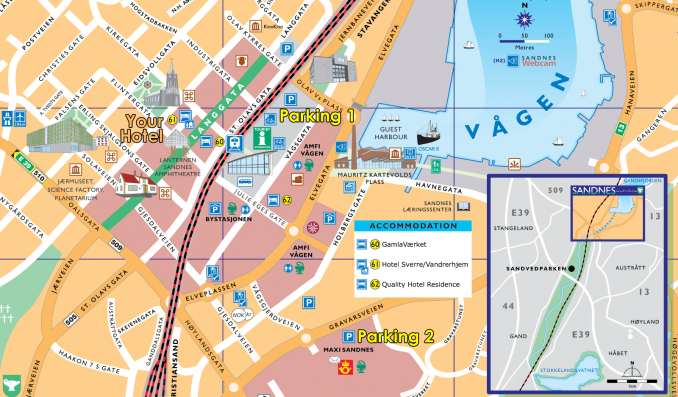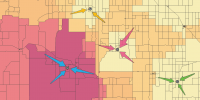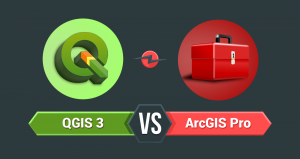Distance Decay: How Far Would You Travel?

How do store planners use distance decay?
Distance decay is the idea that the farther away you are from goods or services, the less likely you are to make use of it. For example, if you live in a rural area, it’s unlikely that you travel to a bigger city 100 miles even if it offers bigger and better goods and services.
So a store’s distance has an impact on how many customers it can attract from nearby towns. This varies from place to place with fewer connections or transportation hindering the impact of distance.
Geographers think that you can apply the idea of distance decay all over the world.
And it doesn’t only apply to city planners. For example, industries like agriculture use distance decay to shorten travel time to nearby supplies like water and fertilizer for fields.
The friction of distance vs time-space compression
If you want to build a store, planners should always consider distance decay as the main driver for customers. Because they know customers are only willing to travel a certain distance to shop there, they can select their store site based on the population nearby. This concept is the friction of distance and is the cause or barrier that hinders interactions.

Because they know that potential customers are only willing to travel a certain distance, major corporations have teams of planners who use distance decay before they establish a store location. They think of friction of distance questions like:
- Are customers willing to travel for one hour to the nearest shop, if it’s a bit bigger?
- Or are customers more likely to travel 15 minutes to a smaller shop?
For example, they use tools like Huff’s Gravity Model for planning scenarios to ultimately pick the best building site.
Time-space compression
We can think of time-space compression as a factor that reduces the impact of distance decay. For example, wealth, technology, and transportation systems can reduce the impact of distance decay.
- Are there any subway systems or bus routes that make it easier for people to access this site?
- Can people afford to own a car and travel this amount of distance to patron the store?
For example, subways, trains, and faster cars all lessen the impact of distance decay. But more than a century ago, when people’s main transportation was horse and buggy, time-space compression wasn’t as big of a factor as it is today.
Geographers build drive-time maps to find how far firefighters, ambulances, or paramedics can service a city or town. In addition, they pick optimal business space with the location-allocation tool to maximize coverage of their services.
What are distance decay examples?
As the distance between the two locales increases, the amount of activity between them decreases. Likewise, if you build a store in the middle of nowhere unconnected to transportation, no one will visit your store.
The idea of distance decay has been applied since the beginning of human civilization. Farmers who water their fields are going to keep their supply of water as the shortest route possible. They don’t want the distance to be very far.
Think of going to a park or shopping and your experience of distance decay… How does Waldo Tobler’s First Law of Geography describe relationships between close and things farther away?
Take the time to write down some of the stores you patron, and if you are applying distance decay in your everyday life. Find some new stores on the map, and picture how likely you are to travel to go there.
Add a comment below and let me know.











“Distance decay is the idea that the farther away you are from goods or services, the less likely you are to make use of it. For example, if you live in a rural area, it’s likely that you travel to a bigger city 100 miles even if it offers bigger and better goods and services.”
Shouldn’t it state it is “it’s unlikely that you travel…even if it offers”